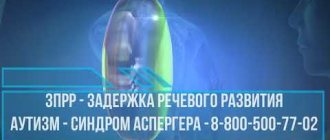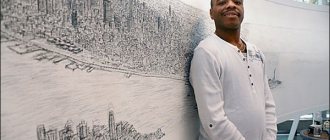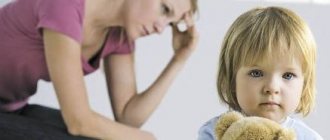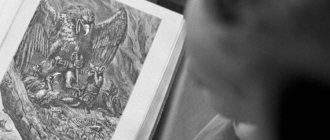Mental disorders in childhood are now not such a rare occurrence. Despite the development of medicine in general and psychiatry in particular, the number of patients with developmental features of the autism spectrum, schizophrenia and other diseases is constantly increasing.
Atypical autism is less common in children, but these statistics continue to grow. It was first identified as a separate disease in ICD-10. Previously, the concept of “autism” was used as a sign of schizophrenic disorders, psychoses, and mental retardation. This medical term has already thoroughly entered our lexicon, but not everyone knows how serious this disease is. However, the fact that a child suffering from it is considered disabled indicates the seriousness of the diagnosis.
Autism concept
Simply put, this is loneliness. The patient loses the ability to communicate with people and interact with the world around him in general. He withdraws into himself, into his own dimension, where there is no place for anyone else. From the outside it looks like a reluctance to communicate with anyone, but in fact, autistic people simply do not know how to do this.
From a physiological point of view, this is a violation of the perception of signals coming through auditory, visual, tactile and other receptors. They either do not completely reach the necessary think tanks, or do so incompletely. Accordingly, the reaction to current events changes.
Autism, or more accurately, autism spectrum disorder, is a complex developmental disorder that usually manifests itself at an early age. It is caused by pathology of the functioning of the nervous system.
Typology of ASD
Kanner syndrome (F84.0)
Classic childhood autism - Kanner syndrome (KS) manifests itself from birth in the form of asynchronous disintegrative autistic dysontogenesis with incomplete and uneven maturation of higher mental functions, inability to form communication and is characterized by the presence of a “triad” of main areas of impairment: lack of social interaction (detachment, rejection, scarcity eye contact, lack of adequate reactions to the emotions of other people), lack of mutual communication, as well as the presence of stereotypical regressive forms of behavior.
Receptive and expressive speech develops with a delay: there is no gesticulation, humming and babbling are poor. In expressive speech, the first words (in the form of echolalia, repetitions of the last and first syllables of words) appear in the second to fourth years of life and persist in subsequent years. Patients pronounce them melodiously, sometimes clearly, sometimes blurred. The vocabulary is replenished slowly; after three to five years, short cliche phrases are noted, and egocentric speech predominates. Patients with KS are not capable of dialogue, retelling, and do not use personal pronouns. The communicative side of speech is practically absent.
The lack of mutual communication is manifested in the absence of imitation games and creative play with peers.
Gross motor skills are angular with motor stereotypies, athetosis-like movements, walking with support on the toes, and muscular dystonia. The emotional sphere does not develop or develops with a great delay, there is no reaction of revitalization to attempts by parents to take them in their arms (with a pronounced symbiosis with the mother), and the distinction between friends and others is not formed. The revival complex arises spontaneously, within the framework of autistic interests, and is manifested by general motor excitement.
Instinctive activity in the form of eating behavior and inversion of the sleep-wake cycle are disrupted. Mental activity is impoverished, stereotypical with symptoms of identity and lack of imitation. Patients do not develop abstract thinking. In patients with KS, with a pronounced lag in the development of higher mental functions, dissociation and disintegration within individual spheres of mental activity are noted.
Course of the disease, outcome. Autism in severe form persists throughout life and stops the child’s mental development. A weakening of autistic symptoms is noted in the second (6-8 years) delayed critical age period (then a slight positive dynamics in the development of speech and fine motor skills is possible). Cognitive impairments are noted from infancy; by puberty, intelligence is reduced in 75% of cases (IQ < 70). The severity of autism on the CARS scale was 40-45 points, which corresponded to severe autism.
The absence of pronounced positive (productive) symptoms and obvious progression during the course of the disease serves as the basis for diagnosing the evolutionary-processual Kanner syndrome in the circle of “pervasive developmental disorders”.
The prevalence of Kanner syndrome is 2: 10,000 children.
Infantile psychosis
(F84.02) In childhood infantile psychosis (IP), manifest attacks with leading catatonic symptoms occur in the first 3 years of a child’s life, against the background of dissociated dysontogenesis or normal development. Catatonic disorders (CD), comorbid with ASD (DSM-V, 2013), occupy a leading place in the attack, and in most patients are of a generalized hyperkinetic nature (running in a circle, along a wall, from corner to corner, jumping, swinging, climbing , athetosis, shaking of the hands, walking with support on the toes, variable muscle tone). They have pronounced autonomic reactions and sweating. Motor agitation is accompanied by negativism. Children do not need to communicate with others, family and friends, they often “preserve their own territory”; with intervention, anxiety, aggression, crying, and rejection of communication arise. Speech is slurred, egocentric, incoherent, with perseverations and echolalia. The average severity of autism in a manifest attack on the CARS scale is 37.2 points (the lower limit of severe autism). The combination of catatonic disorders with autism in IP suspends the physiological (ontogenetic) development of the child during the attack and contributes to the formation of mental retardation. The duration of manifest attacks is 2-3 years.
In remission, children cannot sit still, they run, jump, and spin in a chair during classes. Noteworthy are motor clumsiness (violation of the proportionality of movements, disturbances of rhythm and tempo in complex movements, organization of movements in space). Excessive monotonous motor activity in patients is combined with attention disorders: easy distractibility or excessive concentration, “stuck” attention. At this stage of the disease, in a third of cases, patients are mistakenly diagnosed with Attention Deficit Hyperactivity Disorder (ADHD, DSM-5).
Patients are also characterized by stereotypical desires (retention of stool, urination, eating behavior with fixation on certain types of food). During the habilitation, by the age of 7-9 years, hyperkinetic syndrome (with a predominance of hyperactivity and impulsivity) is stopped in patients, mental retardation is overcome. Only under emotional stress does a fleeting “revival complex” arise with repeated stereotypical movements, which can be interrupted with a remark and the patient switched to other types of movements. Patients continue to have problems in independently organizing and planning pastimes. In the absence of outside help, social interaction is disrupted. Patients experience communication difficulties in building a full dialogue. Some patients continue to have a decreased interest in social relationships; attempts to make friends seem strange and usually end in failure. At puberty, patients are burdened by the absence of companions.
When infantile psychosis manifests itself as polymorphic attacks, catatonic disorders are short-term and are observed only at the height of the manifest attack.
Course of the disease, outcome. The dissociated mental retardation formed during the manifest attack in most cases is mitigated and overcome against the background of habilitation. IQ in all patients is > 70. Autism is losing its positive component and has decreased to an average of 33 points (mild/moderate on the CARS scale). In high-functioning autism, it was not determined using the CARS scale. In patients, the emotional sphere develops, developmental delays are overcome, and mild cognitive dysontogenesis remains. The age factor and development factor (positive trends in ontogenesis), rehabilitation contribute to a favorable outcome in 84% of cases (“practical recovery” – in 6%; “high-functioning autism” – in 50%, regressive course – in 28%). Nosology – childhood autism, infantile psychosis.
The prevalence of PV reaches 30–40 per 10,000 children.
Atypical autism (F84.1)
ICD-10 [1994] first formulated the concept of “atypical” autism, which has been given great importance in the last 10-15 years. Atypical autism in childhood includes the majority of the most severe forms of autism in various nosologies, in the structure of which autism often acts as a psychotic component (Bashina V.M., Simashkova N.V., Yakupova L.P., 2006; Simashkova N.V. ., 2006; 2013; Gillberg S., Hellgren L., 2004, etc.).
The accompanying ICD-10 [1994] research diagnostic criteria state that “autism may be atypical in age of onset (F84.10) and phenomenology (F84.11). Atypical autism (AA) includes psychotic (atypical childhood psychosis) and non-psychotic (moderate mental retardation with autistic features) variants.
- ADP at the onset of the disease at an “atypical age” - after 3 years. The clinical picture is close to the previously described childhood infantile autism.
- ADP with atypical symptoms - with onset in the first 5 years of life, the absence of a complete clinical picture of childhood autism, the similarity of the clinical picture of psychoses in different nosologies (schizophrenia, UMO, Rett syndrome, etc.).
- Syndromic non-psychotic forms of AA, comorbid with UMO, chromosomal genesis in Martin-Bell syndrome, Down syndrome, Williams syndrome, Angelman syndrome, Sotos syndrome and a number of others; metabolic origin (with phenylketonia, tuberous sclerosis and others).
In endogenous atypical childhood psychosis (F84.11), manifest regressive-catatonic attacks occur against the background of autistic dysontogenesis or normal development in the 2-5th year of life. They begin with a deepening of autistic detachment up to “extremely severe” autism (52.8 points on the CARS scale). The leading cause is regression of higher mental functions: speech, motor skills (with partial loss of walking), neatness skills, eating behavior (up to eating inedible things), regression of play. Catatonic disorders occur after negative ones (autistic and regressive). Being on the move most of the day, some patients lie down on the floor or chairs for a short time, “freeze”, then continue moving again. In the hands, monotonous movements of the ancient archaic rubro-spinal and striopalidal level are noted: “washing”, folding, rubbing type, hitting the chin, flapping the hands like wings. Their kaleidoscope is so large that behavioral phenotypes often change and are indistinguishable for different nosologies. Regression, catatonia, severe autism stop the child’s mental development. The duration of ADP attacks is 4.5-5 years.
Course of the disease and outcome. The course of the disease is 80% progressive and malignant. Remissions in endogenous ADP are of low quality, with the persistence of severe autism (42.2 points) and cognitive deficits. Catatonic motor stereotypies are a continuous symptom throughout the course of the disease in the form of subcortical protopathic motor stereotypies. Habilitation is ineffective. Gross motor skills (walking skills) improve statistically significantly. Own speech is not formed; a third of patients develop echo speech. Thinking remains concrete, abstract forms of cognition are not accessible, and the emotional sphere does not develop. Delusions and hallucinations in patients do not appear in childhood, and an oligophrenia-like defect is difficult to distinguish from a pseudoorganic one 3-4 years after the onset of the disease. In 30% of cases, patients with ADP are trained in a type VIII correctional program, the rest are adapted to stay with a family or placed in social protection boarding schools. Atypical childhood psychosis according to ICD-10 criteria is encrypted under the heading of “general disorders of psychological development” with decreased intelligence (F84.11). Negative dynamics during the course of the disease and an increase in cognitive deficit allow us to make a diagnosis of malignant childhood schizophrenia (F20.8xx3) - a cultural aspect of the Russian Federation (ICD-10, 1999). In the USA, childhood schizophrenia is extremely rarely diagnosed before the age of 14, in Europe - before the age of 9. In ICD-10 (1994), the childhood form of schizophrenia is not distinguished; the differential diagnosis of childhood schizophrenia with atypical childhood psychosis is still relevant throughout the world. The diagnosis of DS should be made already at the stage of manifest regressive-catatonic psychosis without fear of “stigma in psychiatry.”
Psychotic syndromic forms of atypical autism with decreased intelligence (F84.11, F70) have a phenotypically universal clinical picture and in catatonic-regressive attacks do not differ from endogenous ADP (they go through similar stages in development: autistic - regressive - catatonic). They differ phenotypically in a set of motor stereotypies: subcortical catatonic - in patients with Down syndrome, archaic catatonic stem - in patients with ADP with Rett and Martin-Bell syndrome. They are united by the increase in asthenia from the stage of “regression” and the persistence of characteristic stereotypies throughout life.
Syndromic non-psychotic forms of AA, comorbid with UMO or “mental retardation with autism features” can be traced in selected genetic syndromes (Martin-Bell, Down, Williams, Angelman, Sotos, etc.) and diseases of metabolic origin (phenylketonia, tuberous sclerosis, etc.) , in which autism is comorbid with UMO (F84.11, F70).
There are no data on the prevalence of atypical autism in general in the medical literature.
Rett syndrome (F84.2)
A verified degenerative monogenic disease caused by a mutation in the regulatory gene MeCP2, which is located on the long arm of the X chromosome (Xq28) and is responsible for 60-90% of cases of CP. Classic CP begins at 1-2 years of life with a peak of manifestation at 16-18 months and goes through a number of stages in its development:
In the first “autistic” stage (lasting 3-10 months), detachment appears, cognitive activity is disrupted, and mental development stops.
In stage II - “rapid regression” (from several weeks to several months), against the background of increasing autistic detachment, movements of an ancient, archaic level appear in the hands - a “washing” type, a rubbing type; there is regression in the activities of all functional systems; slower head growth.
Stage III “pseudo-stationary” (up to 10 years or more). Autistic detachment weakens, communication, speech understanding, and pronunciation of individual words are partially restored. Regressive catatonic stereotypies persist. Any activity is short-term, patients are easily exhausted. In 1/3 of cases, epileptic seizures occur.
Stage IV – “total dementia” is characterized mainly by neurological disorders (spinal atrophy, spastic rigidity), complete loss of walking.
Course of the disease, outcome: unfavorable in 100% of cases, cognitive deficit increases. Death occurs at different times (usually 12-25 years after the onset of the disease).
Prevalence of CP: 1 in 15,000 children aged 6 to 17 years (orphan disease).
Other disintegrative disorders of childhood, Heller's syndrome (F84.3)
Heller's dementia is the loss or progressive deterioration of language, intellectual, social and communication abilities during childhood. Appears at the age of 2-4 years. Children are characterized by increased irritability and withdrawal. Their speech becomes incomprehensible, memory and perception disorders, anxious moods or aggressiveness are noted. Patients do not navigate social situations and often lose previously acquired neatness skills; they exhibit stereotypical movements. As a result of regression in behavior and impaired communication function, the assumption of childhood autism arises. The full clinical picture of dementia gradually develops.
Despite severe dementia, the patients’ facial features do not become coarse. In general, the disorder is progressive in nature.
Prevalence of Heller syndrome: 0.1: 10,000 child population (orphan disease).
Hyperactive disorder combined with mental retardation and stereotypical movements (F84.4) are also extremely rare (less than 1: 10,000 children) and are classified as orphan diseases.
Asperger's syndrome (F84.5)
Evolutionary-constitutional Asperger syndrome develops from birth, but is usually diagnosed in patients in situations of integration into society (attending kindergarten, school).
Patients have deviations in two-way social communications, in non-verbal behavior (gestures, facial expressions, manners, eye contact), and are not capable of emotional empathy. They have early speech development, a rich vocabulary, good logical and abstract thinking.
Patients with AS are characterized by original ideas. The communicative side of speech suffers, they speak when they want, do not listen to the interlocutor, often carry on a conversation with themselves, peculiar deviations in the intonation of speech and unusual turns of speech are typical for them. Patients with AS strive, but do not know how to establish contacts with peers and older people, do not keep distance, do not understand humor, react with aggression to ridicule, and are not capable of emotional empathy.
Severe disturbances of attention, motor clumsiness, disharmony in development, poor orientation in people, in society, unceremoniousness in the realization of their desires lead to the fact that they easily become the object of ridicule and are forced to change schools, despite their good intelligence. Monomaniacal stereotypical interest in specific areas of knowledge, one-sided narrowly specific interests with directed training can form the basis of a future specialty and contribute to socialization.
Course of the disease, outcome. By the age of 16–17 years, autism softens, in 60% a schizoid personality with sensitive character traits is formed. Patients are successful in their chosen specialty; By the age of 30-40 they start a family.
In 40% of patients with SA, the condition may worsen during critical periods of development with the addition of phase-affective, obsessive disorders, masked by psychopathic-like manifestations, which are relieved with timely and effective pharmacotherapy and rehabilitation without further deepening personal identity.
Symptoms
Atypical autism is more difficult to identify than its classic form, so the diagnosis is often delayed. Missed onset of the disease and late treatment has a negative impact on further results.
The most surprising and at the same time confusing factor is the huge variety and individuality of symptoms.
Common features of the disease are disturbances in social inclusion, communication and interaction with others.
At home, it is quite difficult to recognize atypical autism in children. Most often, relatives attribute certain oddities and unusual behavior to age-related changes or temperamental characteristics. They are in no hurry to contact a specialist with such problems, thereby missing the initial stage of the disease.
The distinctive factors of atypical childhood autism are:
- Age limits. This type of disorder has the peculiarity of developing not in early childhood, but at a later date - 3 years, 6–10 years, or adolescence. These are those periods of a child’s life when he experiences stress about adapting to a new team, the need to communicate with strangers, and building relationships.
- Socialization. Despite the fact that the patient is completely dependent on his parents, he reacts poorly to them. The baby may not worry about the absence of his mother or, on the contrary, show concern, and behave coldly and unkindly in front of her.
- Speech. It is either absent or reduced to the use of individual words, or, in extreme cases, phrases. Constructing sentences is too difficult a task.
- Emotional breakdown. During normal activity, absolute or selective non-contact may be observed. Intense external stimuli - bright lights, loud sounds - cause fear. Uncharacteristic, unpredictable reactions to events may occur.
- Behavior. There is a negative reaction to touch. Such children do not strive to copy adults or peers and prefer loneliness.
With normal physical development, mental retardation is most often observed.
Assessing the level of intellectual abilities can be difficult, since a diagnosis made at an early age can be corrected.
Diagnosis worsens due to disorders of the speech apparatus and communication skills. During tests, the child, as a rule, knows the solution to the problem, but does not say it.
Atypical Autism – Signs and Symptoms
Diagnosis of childhood autism has very clear developed criteria. The concept of “atypical autism” means that the child has autism spectrum disorders, but either they appeared later than 3 years of age, or they are partially present.
The classic type of autism in children is pronounced already in the first year of life. Such a baby does not roar, does not react to the presence of a significant adult, and has no reaction to toys.
Diagnosing atypical autism is more difficult than classic autism, since here the signs are more blurred and even close people, up to a certain point, can attribute many of its manifestations to characteristics of temperament or development. Signs of atypical autism in children:
- Poor interaction, emotional detachment. The child does not show initiative in communication, does not look at the interlocutor, does not respond to names or addresses. In relation to close people he is indifferent. Shows no interest in strangers.
- Speech impairment. He speaks in cliches, repeats the last words he heard, says something that does not apply to the current situation.
- Lack of imagination, role-playing, lack of need for communication.
- Difficulties in developing self-care skills.
- Repetitive actions. The child has a certain ritual, which he resorts to during times of discomfort, instead of games, for constant pastime. The daily routine is established. Any violation causes discomfort, aggression, hysteria.
It should be understood that describing all possible symptoms of atypical autism is as unrealistic as fitting all patients to a certain criterion. The above-described signs can be combined in a variety of combinations and may not be completely present. Their severity may vary. Sometimes diagnostic errors go beyond psychological pathologies.
For example . The girl was diagnosed with cerebral palsy when she was 4 years old. Her gait was extremely unsteady. It seemed that the child did not control his body. When diagnosed by specialists, it turned out that the girl suffered from impaired perception of space, decreased sensory sensitivity, and lack of emotional contact with people. To put it simply, her brain incorrectly estimated the distance to objects and the floor. She walked like a sailor, ignoring obstacles in the form of furniture or people. At the same time, self-care skills were normal, the lag in cognitive development was insignificant. Diagnosed with atypical autism.
Features of the course of the disease
Children with autism have a very difficult time mastering everyday skills that everyone takes for granted. Eating normally is difficult. They are extremely selective and picky when it comes to food. For example, a child eats only semolina porridge, and no variety of dishes will convince him to try something else. If there is no porridge, he will starve. In the end, his mother will cook it and feed him.
The toilet is another problem. Children do not see the point of going to the potty, and cannot understand why adults persistently strive for this. This happens because from early childhood they have a very weak (or no) reaction to such stimuli as:
- cold;
- wet diapers
- hunger;
- unpleasant odors;
- touch.
In play activities, toys are most often completely ignored. Instead, the child prefers to use household items. There is usually no plot of the game; only stereotypical movements are observed, such as spinning in the hands or moving from place to place. An autistic person may sniff, touch, lick a new object for a long time, move it in front of his eyes, or crawl on his knees around it.
Due to speech impairment, it is almost impossible to conduct a dialogue with the patient; he simply will not support it. However, the baby can remember fairly long phrases from films and television shows and reproduce them accurately. When you contact him with a question, he may repeat it or not respond at all.
Complications of atypical autism
Almost all children suffering from this disease find themselves outside of public relations. Their quality of life remains unsatisfactory. They do not have any social support to create their future. Moreover, they themselves do not want to receive it, hiding from the outside world.
They have significant limitations in their capabilities. This most often concerns self-determination. It is difficult for the patient to get an education and find a job. Social deficit is the main cause of complications. Children diagnosed with AA experience certain learning difficulties. They need intensive and constant individualized psychological and pedagogical support.
In adult life, such people usually do not realize themselves in a profession and do not create families.
Reasons for development
The main factor in the development of early autism is considered to be a deficiency of the central nervous system. The reasons why it occurs are as follows:
- genetic predisposition;
- chromosomal abnormalities;
- organic lesions of the central nervous system in pathologies of pregnancy and childbirth;
- premature schizophrenic process;
- some congenital diseases.
Modern medicine already knows about thirty similar nuances. Therefore, pathologies such as mental retardation and autism spectrum disorders are becoming more common.
The likelihood of having a child with special psychological needs exists in every family.
The actions of various factors or their combination introduce individual characteristics into each patient. The character and type of personality also leaves an imprint on the course of the disease. Even with similar symptoms in the same situations, different children may behave differently.
Atypical autism with mental retardation
For people with autism spectrum disorder, assessing their mental development is difficult. Mental retardation is diagnosed by testing skills, knowledge, and skills by passing tests. A child with atypical autism is not always able to demonstrate his knowledge because he experiences difficulties with speech and communication.
An example of an error in diagnosing mental retardation in autism is Sonya Shatalova. The girl, who was considered a child with severe mental retardation, who still does not speak, has been writing wonderful poems since the age of 8, analyzing events, and is the author of deep aphorisms.
It often happens that the diagnosis of “mental retardation” is made earlier than autism spectrum disorders are identified. An interesting theory is that the number of autistic people in the modern world and in the last century is approximately equal. The difference lies in the principles of diagnosis. Previously, before the concept of “autism” appeared, patients were given schizophrenia, mental retardation, debility and other diagnoses associated with mental disorders, development and organic brain damage. The diagnosis of “childhood autism” 30 years ago sounded like “early childhood schizophrenia.”
Childhood catatonic autism
A severe form of the disorder is expressed by catatonic agitation. It manifests itself most often by the following actions:
- monotonous walking, turning into running;
- scream;
- laughter, crying;
- prolonged stereotypic movements;
- impulsiveness expressed in unexpected actions.
Motor excitation suppresses instinctive activity and is expressed by negativism, attacks of numbness or waxy flexibility. Attempts at physical influence provoke resistance, hypertonicity and a persistent desire to avoid touching.
The attack may be accompanied by the pronunciation of individual words, syllables, and sounds. At the same time, the timbre of the voice and volume are constantly changing: the child either whispers something unintelligible, then suddenly suddenly starts screaming. There is a stereotypical repetition of phrases, either clear or drawn out and blurred.
Establishing diagnosis
The sooner a disorder is identified, the faster the correct approach to it will be found, and an algorithm of actions will be built that will lead to rapprochement and establishment of contact. First of all, this is the task of parents.
Children a priori cannot be the same, but even with a discount for personality traits or upbringing, they must fit into generally accepted norms of development.
By the end of the first year of life, a child without autistic disorders should master the following basic skills:
- know your name and respond to it;
- communicate with others;
- react emotionally to various situations.
Modern diagnostic methods allow parents, even before the birth of a child, to examine a panel of genes responsible for mental retardation and the development of autistic disorders. The genetic panel makes it possible to both accurately confirm the diagnosis and further detailed examination of the patient.
If parents have not done such tests, but begin to notice autistic manifestations, medical help is clearly needed. The first authority they should contact is a child psychologist. If a negative trend is confirmed, he gives a referral to a neurologist or psychiatrist.
General detailed diagnostics are carried out in the following ways:
- conversation, observation of the child;
- tests, questionnaires;
- game, construction;
- MRI, CT scan of the brain;
- study of the autonomic and cardiovascular systems.
Children with autism may not respond to sound stimuli for a long time. For this reason, parents begin to suspect hearing problems. At the initial stage of diagnosis, it is important to make sure that there are no problems with auditory perception of information or to confirm them.
Diagnosis of atypical autism
This diagnosis is confirmed by a psychiatrist. A pediatrician, a clinical psychologist and a neurologist take part in the examination of the child. To accurately diagnose a disease, a number of specific criteria are taken into account:
- abnormal development of AA according to the type of dysontogenesis;
- manifestation (this indicator is not tied to age);
- degree of symptoms of social interaction disorders;
- degree of stereotypy.
Atypical autism is diagnosed:
- through clinical conversation;
- through patient observation;
- method of studying cognitive functions;
- EEG (electroencephalography).
Specialists usually take a comprehensive approach to identifying and diagnosing the disease.
When should you see a doctor?
At the first signs and symptoms of AA, you should contact a specialized clinic for help. First of all, you need to visit a pediatrician, who will give you a referral to highly specialized doctors. A psychiatrist confirms the diagnosis and carries out treatment. A neurologist and a clinical psychologist are involved in this process.
When atypical autism in children is diagnosed, treatment begins urgently, since it is extremely important to stop the progression of the disease. By contacting JSC “Medicine” (academician Roitberg’s clinic), which is located in the central district of Moscow, you can get the correct diagnosis. Doctors at our multidisciplinary medical center will organize the most optimal treatment method, taking into account the characteristics and age of the child.
Treatment of atypical autism in children
Treatment of atypical autism consists of comprehensive medical, psychological and pedagogical support. It is aimed at improving the child’s quality of life, ensuring independence and freedom in everyday activities. People who help a child recover try to restore his subjectivity in society. But there is no single method. Doctors approach this process individually, since there is no treatment regimen that will be equally effective for all patients.
But in the treatment of atypical autism in children, the following methods are used:
- education. This method is based on intensive and structured training for children. They learn to help themselves, to serve themselves. This method is focused on mastering communication skills and useful work. This allows you to reduce the severity of symptoms and correct non-adaptive forms of activity. Classes are carried out with a speech therapist, occupational therapy is carried out;
- drug therapy. Experts are trying to relieve the symptoms of AA with medications. Children may be prescribed psychotropic drugs or medications that have an anticonvulsant effect. The safest drugs are psychostimulants, antidepressants, and anticonvulsants. In difficult cases, antipsychotics can be used;
- rehabilitation in society. In this case, an inclusive approach to the educational process, as well as the implementation of professional duties, is practiced. These activities are carried out as a single complex, and a whole group of specialists takes part in them (psychiatrists, neurologists, speech therapists, medical psychologists, speech pathologists, exercise therapy instructors, creativity teachers, music teachers and special teachers).
Prognosis and prevention of atypical autism in children
With early detection of the disease, a positive outcome in overcoming cognitive impairment can be guaranteed. It is possible to completely restore self-care skills and improve the child’s motor skills. Communication skills are also restored.
If active therapy is carried out, then the symptoms of AA do not progress, and the child’s mental state approaches normal. But this is the case if there is no severe mental retardation. Regarding preventive measures, at the moment they have not yet been developed.
How to make an appointment with a psychiatrist and neurologist
You can make an appointment with a psychiatrist and neurologist at JSC “Medicine” (academician Roitberg’s clinic) on the website using a special form. You can get an appointment with a doctor by calling. The help desk is available 24 hours a day. Our clinic is located in the central district of Moscow. You can find us at the address: 2nd Tverskoy-Yamskoy lane, building 10 (Mayakovskaya metro station).
Behavior correction
A child's adaptation reserves also directly depend on the causes of autism. This should be facilitated by external factors:
- the right approach is organized;
- correctional work;
- treatment if necessary.
The best results in the fight against childhood atypical autism, the catatonic form of the disease and other autism spectrum disorders are achieved through teamwork. Positive dynamics can be achieved only with the coordinated actions of three components: all family members, medical workers, and teachers.
The patient needs to be taught social communication. Everyone who does not have such deviations sees this from early childhood in the example of parents and older children. An autistic person cannot do this; he needs a special approach and special corrective actions.
Atypical autism without mental retardation
Manifestations of atypical autism without mental retardation at the initial stage are easily confused with personality traits. Such children:
- They sit alone for a long time, without visible activities, or repeat one thing. They can sway, knock, and sing something.
- They do not need approval, do not respond to punishment, requests, or calling by name.
- They speak little, often in separate words. They talk about themselves in the third person, calling them by name.
- They give the impression of naughty, uncontrollable children.
- They do not have contact with peers or strangers. When strangers try to talk to them, they react with flight, aggression, hysteria, or remain indifferent.
- They do not look the interlocutor in the face. They can handle while standing with their back turned.
In general, behavioral disorder is expressed in extreme emotional coldness, detachment from people and events. They extremely value certain things, order, and established daily routines.
Diagnosis of autism spectrum disorders depends on the observation and sensitivity of parents. Prognoses of future life and the degree of social adaptation of a special child depend on loved ones.









